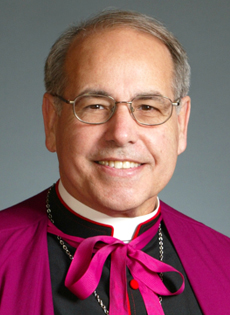
Praying with the Scriptures
Monday, September 28, 2009
*Bishop Felipe Estevez
Nothing is as important for the pastoral life of our Archdiocese as your personal and patient slow reading of the Scriptures with openness to the Spirit that inspired them.
Christ is sewn in the Scriptures, as St. Jerome used to say. The recent Synod on the Word stated it so clearly - Christ is the face of the Scriptures.
Our youths are discovering the power of praying with the Scriptures. It helps them to overcome sensuality, stress in human relations and anger toward others. Although there is a variety of ways to pray with the Scriptures, there is a prominent method called Lectio Divina.
Lectio Divina extends the Word beyond the liturgy to keep the Word in the heart as Mary did. An atmosphere of silence is indispensable for the Word to take root in the heart. Silence is best achieved when our will is truly attuned to His will. No wonder she said: Let it be done according to your will.
The best example of Lectio Divina is Mary in dialogue with the Archangel Gabriel. To welcome God=s word is to allow Christ to take flesh in us.
Since we are foreigners to silence, to walk this walk is not easy; it requires patience and endurance. Yet if you do it, you will reap great and infinite rewards.
How do you do Lectio Divina? You start with a commitment of time, for instance 20 minutes, 30 minutes, one hour. Then you choose a Gospel or the readings of the liturgy of the day. After praying a few vocal prayers, you read the text slowly, twice. Then you meditate pondering on the key words. Then you respond prayerfully to what you have received, at times praising and giving thanks, at other times petitioning. Finally, you dwell in silence and stillness in union with the Holy Spirit and Mary.
There may be times when distractions, fears and anxieties interfere with the Lectio. It is important to keep at it regardless, without evaluations which can lead to discouragement. Distractions will always be there and God knows it. Lectio is disinterested.
Lectio Divina is best when it takes place in adoration of the Blessed Sacrament. The invitation is to pray from the heart to His heart. Since there is an intrinsic relationship between adoration and the Mass, the Lectio takes the form of the first part of the Mass which proclaims and receives the Word. To pray the Lectio is to dwell on the divine Scriptures as if eating and drinking the food from heaven.
This practice changes us deeply, for it evangelizes us and turns us into evangelizers like the Samaritan woman. I hope you will make the commitment to try it – and let me know your experience.
Most Reverend Felipe J. Estévez
Auxiliary Bishop of Miami


Comments from readers
On Lectio Divina..., I'd like to elaborate further...
It is through our inner immersion into that 'soil' which Scriptures represent, and where upon St. Jerome sees Christ sewn '' that our reflective experience guides us into yielding fruits...Good fruits, when we succeed on being Good sowers in Good soil !
Lectio Divina is a great gift for all of us...as the so many which you bestowed on us at different ministries around the dioceses. If I were asked on what was the first image that came to my mind when I read your invitation...I tell you that it was our Lord at Gethsemanie...involved in Lectio Divina with the Father...but also undertaking trial through his blood...that which eventually he would shed...in confirmation of his nature as a Good shepperd...who yields his life for his sheep.
Jes�s
As always, to read you is to learn. Your hopeful insights give us the hope of praying one day the way the Father taught us. Thanks again.
Carlota E. Morales, Ed. D.
Maria Esperanza
Thank you for telling us how we can begin to practice Lectio Divina. I have read about this practice previously but I kept wondering well this sounds very good for the soul but how do you start? You do wonderful work and are an inspiration. I learned a lot about my church while you were my parish Pastor at St Agatha back in 1998. It's great to find that you have a blog. Thanks again and God Bless.